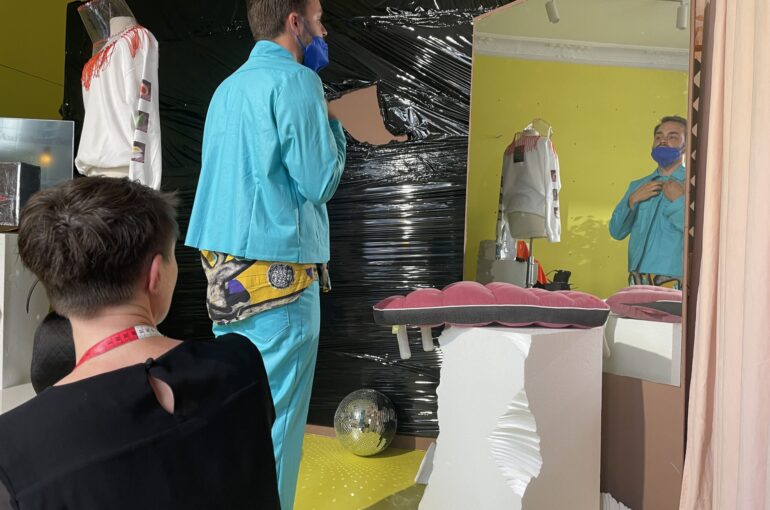Prototyping and other endeavors

In the last post we mentioned how we collaborated with different subcontractors in order to go from samples to garments. The fashion designer, pattern maker and tailor helped us immensely in this undertaking, and made it a reality to have some final garment pieces ready just in time for the planned treatments with our partners in Hub Valencia.
In this post we will elaborate on the process of making the garments ready for the final finishing treatments, plus shortly gather the learnings when making a Life Cycle Analysis and looking into the amount of water used in material production.
First to prototyping
To get the final garments ready we went through 3 main phases: ideation, testing and prototyping as a part of our iterative process.
Ideation ⇆ Test ⇆ Prototype
↳
Materials (craft/industry, treatments, thicknesses)
⇅
Design (sketches, mood board, style, finishing, details, sizes)
⇅
Pattern (fit, size, style, technology, risk/changes)
Decisions on choice of materials, development of design and making of patterns all informed each other and created the basis for the iterative process of going from idea to prototype. Testing each idea and outcome was necessary to move forward and get wiser.
We could again not have done this without the particular expertise of Sophia Wameling, fashion designer, and Silvia Wald (Gravitex), pattern maker and Toni König, tailor. With the informative feedback of these experts we were able to take the right choices in terms of style and fitting, in the end obtaining some prototype garments we were extremely pleased with. We have learned so much, which will help us indescribably next time we develop some new garments or refine the ones we have just developed.
Other endeavors: Life Cycle Analysis and Wastewater
While producing New Blue Crafts, we calculated how much water went into production. Hereafter we made an overall map of the travel of the material, including the waste and resources required in each step. We want to publish the findings in an easy to understand graphic on our soon to come new website. It was a very insightful process and we can highly recommend it to anyone involved in any kind of production. For this we also have some learning points. Apparently, wastewater has to be cooled down to 4 degrees celsius in order to be in proper state for analysis, contained in a clean bottle, at the right amount (around 1 liter should do). The wastewater excerpt has to be cooled down from when it is taken until the point it enters the lab for analysis.
Sometimes learnings inform each other and happen in a structure that enforces the quality of the output, like our prototyping, other times you just have to learn the hard way and redo the tasks you had set your mind on when the time is right. We now know what a life cycle analysis requires and are realising that this is also an organic entity that changes as material input, production and other factors slightly change.
We are happy with the outcomes and learnings we have gathered in this phase of prototyping. Next step is to travel to Hub Valencia with our garments and to post-treatments on them. Wish us luck! We know we will be in good hands and have the right amount of structure and expertise to secure a positiv result and well considered solutions.





